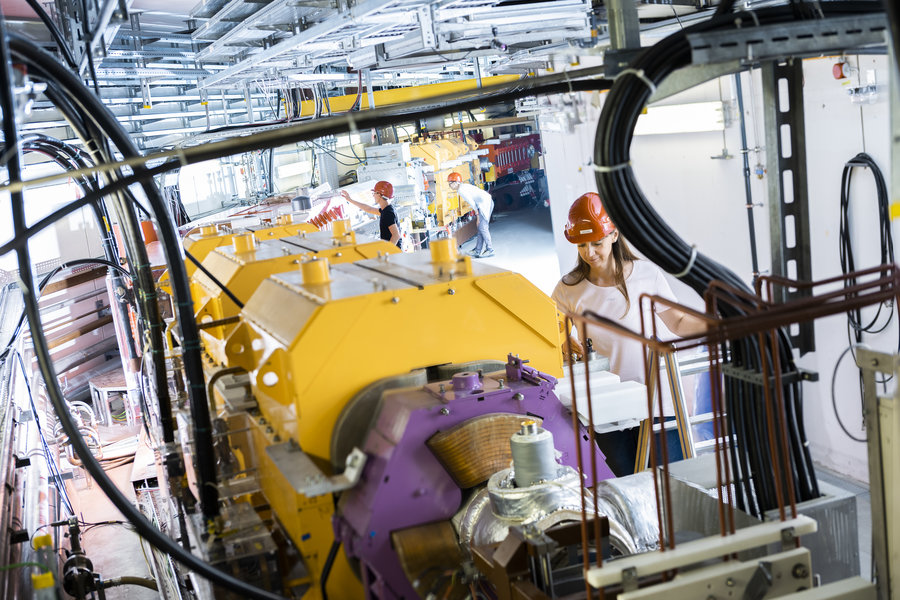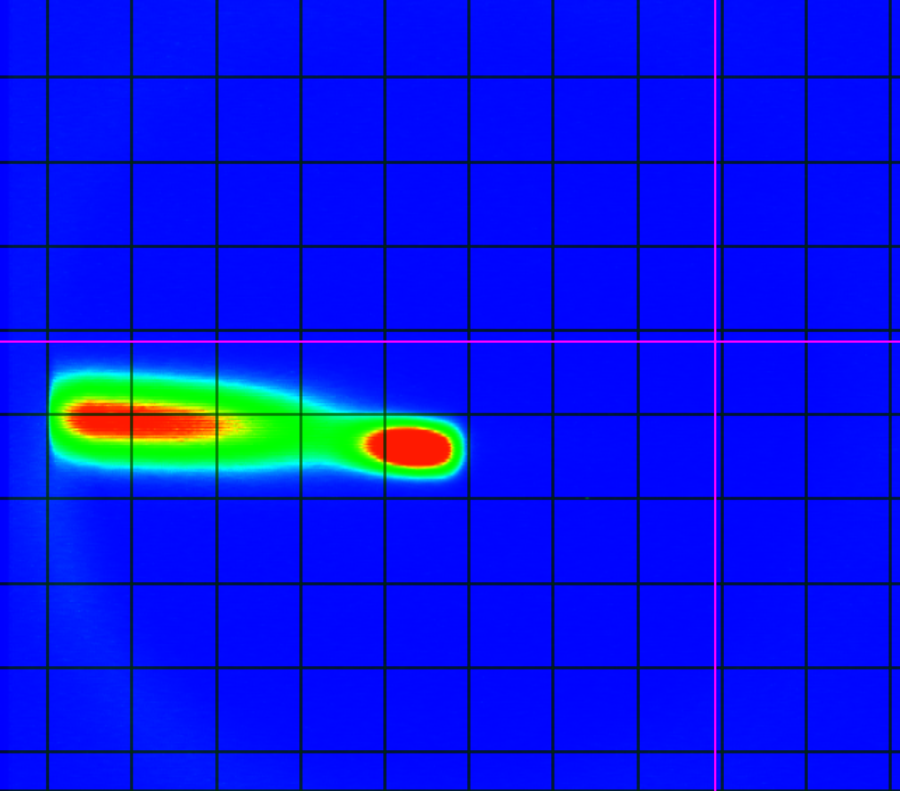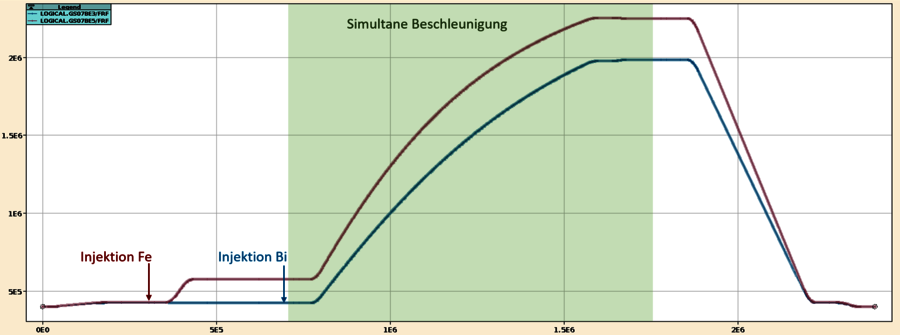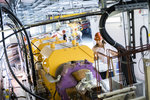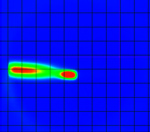Accelerating two ion beams simultaneously: Unique process demonstrated in the SIS18 ring accelerator
26.06.2025 |
For the first time, team members of the SIS18/SIS100 sub-project have succeeded in accelerating and extracting two different ion beams with different revolution frequencies together in the same cycle at the SIS18 heavy ion synchrotron. The faster ions of one beam constantly overtake the slower ions of the other beam, so that the particle bunches of the two beams repeatedly penetrate each other. This globally unique procedure impressively underlines the enormous innovation potential and the unique experimental possibilities offered by the accelerator facilities at GSI and, in future, also at FAIR for experiments with heavy ions.
The process demonstrated in the machine study opens up a wide range of new applications. For example, in tumor therapy with charged carbon particles, an additional helium component in the beam can be used for further technical optimization of the accurate position tracking of the experimental beam. The new process allows selective control of the extraction of the two types of particles. In plasma physics experiments, a second ion type can be used to analyze the density variations of the plasma generated by the first ion type. For nuclear physics experiments, the second ion type can be used as a calibration beam. Last but not least, the method also enables high-precision measurement of the energy of the beam extracted from the SIS18, which is important for certain hadron experiments.
In the machine study carried out now, beams of the two ion types iron (56Fe25+) and bismuth (209Bi68+) were injected one after the other from the preceding linear accelerator UNILAC into the synchrotron SIS18. Although both types of ions come from UNILAC at the same speed, they have a different ratio of mass to charge, so that the magnetic fields required for directing and focusing the beams in the ring accelerator are of a different strength for the two types of ions. For this reason, the iron beam - which is easier to deflect - must be injected first and then accelerated to such an extent that the strength of the magnetic fields corresponds to the values required for the injection of the bismuth ions, which are more difficult to deflect.
Due to this acceleration, the iron ions in the SIS18 have a higher speed and therefore a higher revolution frequency than the bismuth ions. In order to accelerate both ions simultaneously, the alternating voltage required for acceleration must therefore be generated by two independently operating high-frequency cavities with a frequency adapted to the increasing speed of the respective ion type. Thanks to the flexibility of the high-frequency systems of SIS18, this novel operation mode could be realized by an appropriate extension of the software used to generate the device set values.
Before the new process with optimized beam parameters can be used in routine operation at GSI/FAIR, a number of steps still need to be taken. For example, the process is to be combined with electron cooling in order to generate high particle densities. In this context, theoretical studies on the interactions between the two beams at high intensities are also planned. The foundation stone has been laid with the successful demonstration in the machine study. (BP)




